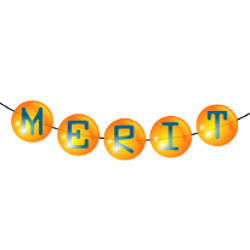The Merit simulation has been designed to encourage the separation of team member responsibilities into different managerial functions to foster responsibility and teamworking, and the success or failure of the company may well depend upon the effective interaction between the different factions.
For example, a typical scenario for the structure of a team might be :-

The MERIT acronym stands for Management Enterprise Risk Innovation and Teamwork. The main objective of MERIT is to enable young engineers to effectively acquire these additional skills required to progress their careers.
The simulation is designed to demonstrate the interdependence of the various managerial decisions and the interlocking nature of the variables that determine the success or failure of a construction company. MERIT has great potential to impact on the duration of the learning curve of young engineers.
MERIT as a simulator shows how managerial and technical decisions made today unfold into tomorrow’s operational and financial results. It develops in participants a greater dexterity in exercising the decisions involved in their functional roles. It develops skills in other functional aspects of the organisation outwith their own scope of responsibilities.
Each participating team (ie virtual company) is required to make key decisions. These decisions cover the various functions that interplay in the management of a construction company and include marketing, estimating, tendering, finance and personnel management. These decisions cover both strategic and operational aspects of the company’s management.
MERIT offered a breakthrough in the approach to training engineers in company and financial management which was inter-alia by experience, by attending formal courses or by reading. None of these traditional approaches offer the opportunity to practice, through simulation MERIT does. The new MERIT approach was much more dynamic and as such stimulates further study, encourages the participants to develop their analyses supporting their decision. In many cases these are sophisticated analyses and allows the participants to explore strategies and experiment with potential outcomes.
MERIT was also a breakthrough in the scale of training in these topics. For example the National Construction Business Game run on behalf of the Institution of Civil Engineers is in two phases, phase 1 whereby all the teams are competing against the simulation and phase 2 whereby the six leading teams come together to compete not only against the simulation but against each other. Phase 1 provides the opportunity for unlimited numbers to participate and this has made MERIT a very widely used training vehicle and arguable the most cost effective training vehicle current available.
Prior to phase 1 there is a multimedia tutorial that allows participants to familiarise themselves with the concepts and workings of MERIT, it allows access to the MERIT simulator, training them in the decisions they will have to make, allowing them to experiment without penalty. This is truly an educational phase and the lessons learned are tested in phase 1 where their performance is measured against all the other teams.









